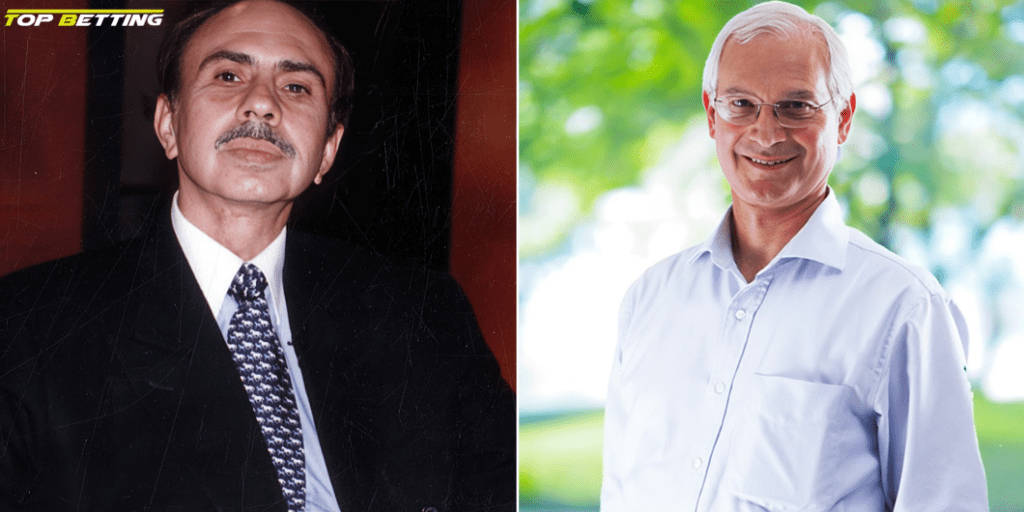
Why is the 127 year old business splitting
The Godrej founding family, well-known for its wide range of products from real estate to home appliances and soaps, has decided to split the company.
The 127-year-old Godrej Group’s founding family, whose businesses include everything from real estate to home appliances and soaps, said on Tuesday that they were redistributing their ownership stakes in the company. Following the acquisition of the required regulatory clearances, this realignment will go into effect.
An agreement states that Adi and his brother Nadir will continue to be in charge of Godrej Industries, which consists of five publicly traded companies. In the meantime, unlisted Godrej & Boyce, its affiliates, and a sizeable land bank, which includes a prestigious Mumbai property, will pass to cousins Jamshyd and Smita.
The group has split into two branches of the founding family, according to a statement from them: Adi (82) and his brother Nadir (73) on one side, and his cousins Jamshyd (75) and Smita Crishna (74), on the other.
Currently, Adi is the group’s chairman; his brother Nadir is the chairman of Godrej Agrovet and Godrej Industries. The unlisted Godrej & Boyce Manufacturing company is chaired by their cousin Jamshyd. In addition, his sisters Rishad and Smita Crishna own shares in Godrej & Boyce, the company that owns most of the real estate in Vikhroli.
Why is there division inside the group?
According to the statement, the family defined the split as a “ownership realignment” of their stakes in the Godrej enterprises.
“To preserve harmony and better align ownership in recognition of the varying visions of the Godrej family members, the realignment has been reached in a courteous and thoughtful manner. This will expedite the process of generating long-term value for shareholders and all other stakeholders and help optimise strategic direction, focus, and agility, the statement stated.
What goes to whom?
According to the announcement, Adi and Nadir will inherit the Godrej Industries Group, while Jamshyd and Smita will receive the Godrej Enterprises Group.
Godrej & Boyce (G&B) and its affiliates make up Godrej Enterprises Group (GEG), which is a conglomerate of companies operating in a number of industries, including aerospace, aviation, defence, energy, building materials, construction, green building consulting, EPC services, intralogistics, furniture, interior design, architectural fittings, IT, software, and infrastructure solutions. Jamshyd Godrej, the managing director and chair, Nyrika Holkar, the executive director, and their immediate families will now be in charge of this group, it stated.
The statement went on to say that Nadir Godrej will serve as chairman of Godrej Industries Group (GIG), which is made up of the listed companies Godrej Industries, Godrej Consumer Products, Godrej Properties, Godrej Agrovet, and Astec Lifesciences. Nadir Godrej and Adi Godrej, as well as their immediate families, will control GIG. In August 2026, Pirojsha Godrej, the Executive Vice Chair of GIG, will take over as Chair from Nadir Godrej.
According to sources cited by PTI, Adi and Nadir may sell their stakes in Godrej & Boyce to the other family branch. Jamshyd and his family are anticipated to use a familial structure to give their cousins ownership shares in Godrej Consumer Products (GCPL) and Godrej Properties. Godrej & Boyce (G&B) will continue to own the prized real estate assets, which are mostly situated in the suburbs of Mumbai. A separate agreement will govern ownership rights.
The decision for the Godrej Group, a prominent conglomerate with a legacy spanning 127 years, to split is a strategic move aimed at unlocking shareholder value and fostering growth in its diverse business segments. Here’s an explanation of the reasons behind this significant development:
- Focus on Core Businesses: Over the years, the Godrej Group has expanded its presence across various sectors, including consumer goods, real estate, agribusiness, and more. By splitting the conglomerate, each entity can focus on its core businesses, thereby streamlining operations and enhancing efficiency.
- Portfolio Optimization: The restructuring allows the Godrej Group to optimize its portfolio by aligning businesses with similar synergies and growth trajectories. This approach enables each entity to pursue strategic initiatives tailored to its specific market dynamics and opportunities, driving long-term value creation.
- Unlocking Shareholder Value: The decision to split is also driven by the aim to unlock shareholder value. By creating separate entities, investors gain greater transparency and clarity into the performance of individual businesses, facilitating better evaluation and investment decisions.
- Enhanced Agility and Flexibility: With standalone entities, the Godrej Group entities can respond more swiftly to market changes, customer needs, and emerging trends. This enhanced agility and flexibility enable them to capitalize on growth opportunities and navigate challenges more effectively in their respective industries.
- Strategic Expansion: The restructuring sets the stage for strategic expansion and investment in high-growth areas. Each entity can pursue its growth agenda independently, whether through organic initiatives, partnerships, acquisitions, or market diversification, driving innovation and competitiveness.
- Adapting to Evolving Market Dynamics: The decision to split reflects the Godrej Group’s proactive approach to adapting to evolving market dynamics and staying ahead in a rapidly changing business landscape. It demonstrates the group’s commitment to long-term sustainability and resilience amid dynamic market conditions.

In summary, the decision for the Godrej Group to split represents a strategic realignment aimed at unlocking shareholder value, optimizing the portfolio, enhancing agility, and fostering growth across its diverse business segments. By creating standalone entities, the group is better positioned to capitalize on opportunities, drive innovation, and create long-term value for stakeholders in the years to come.





